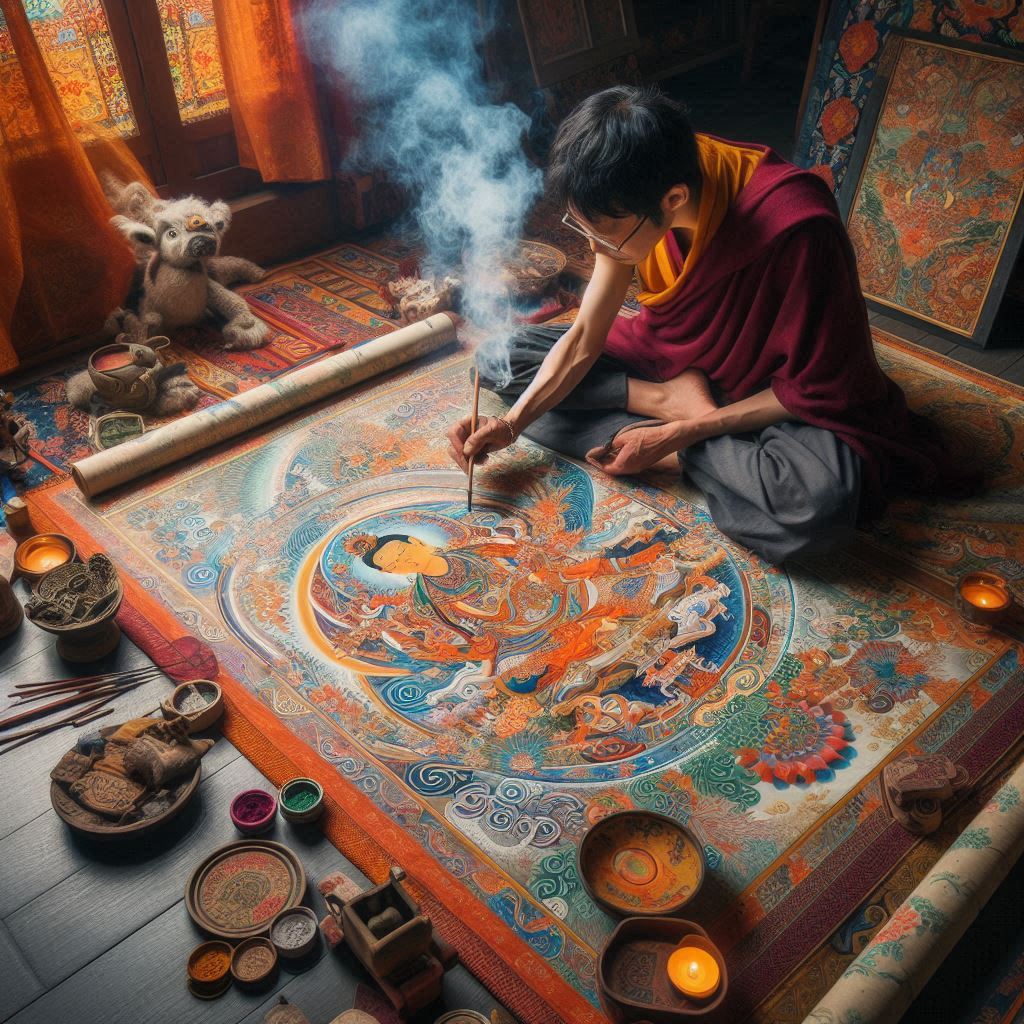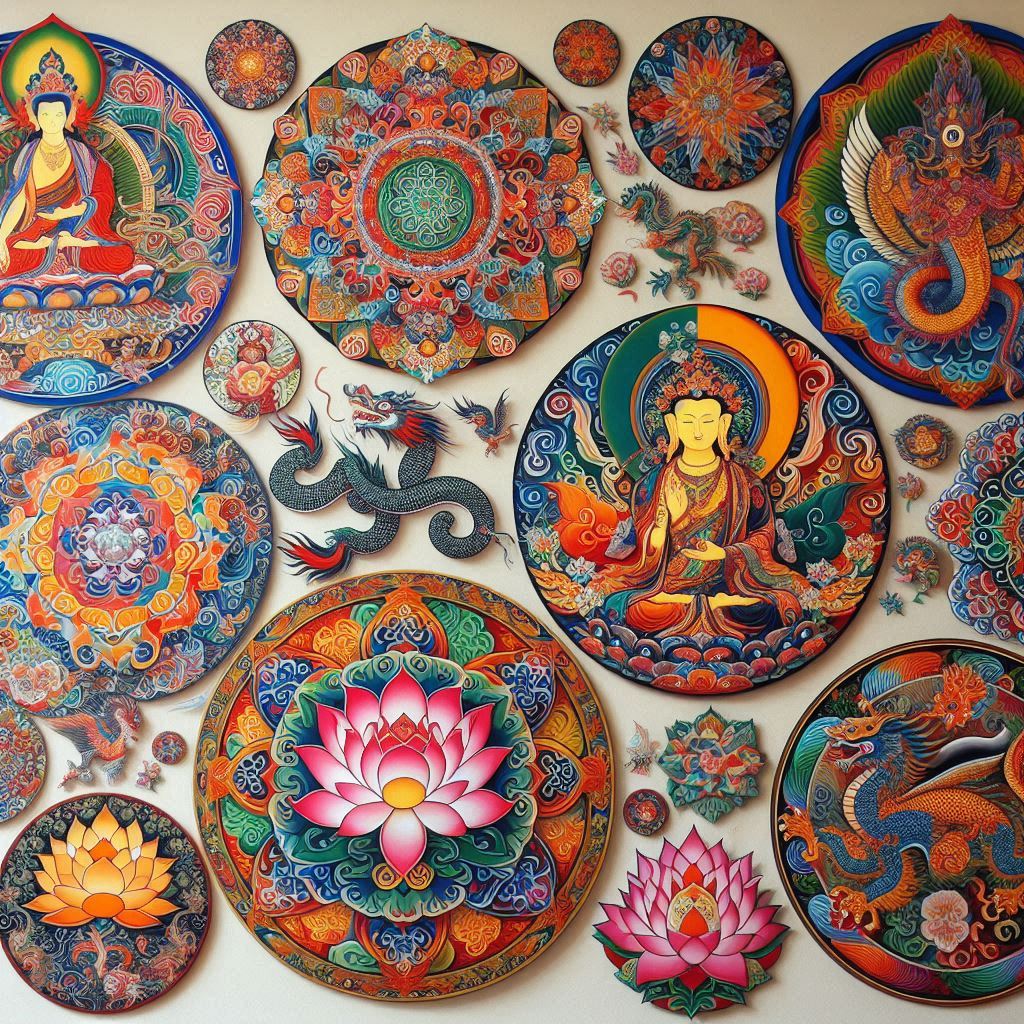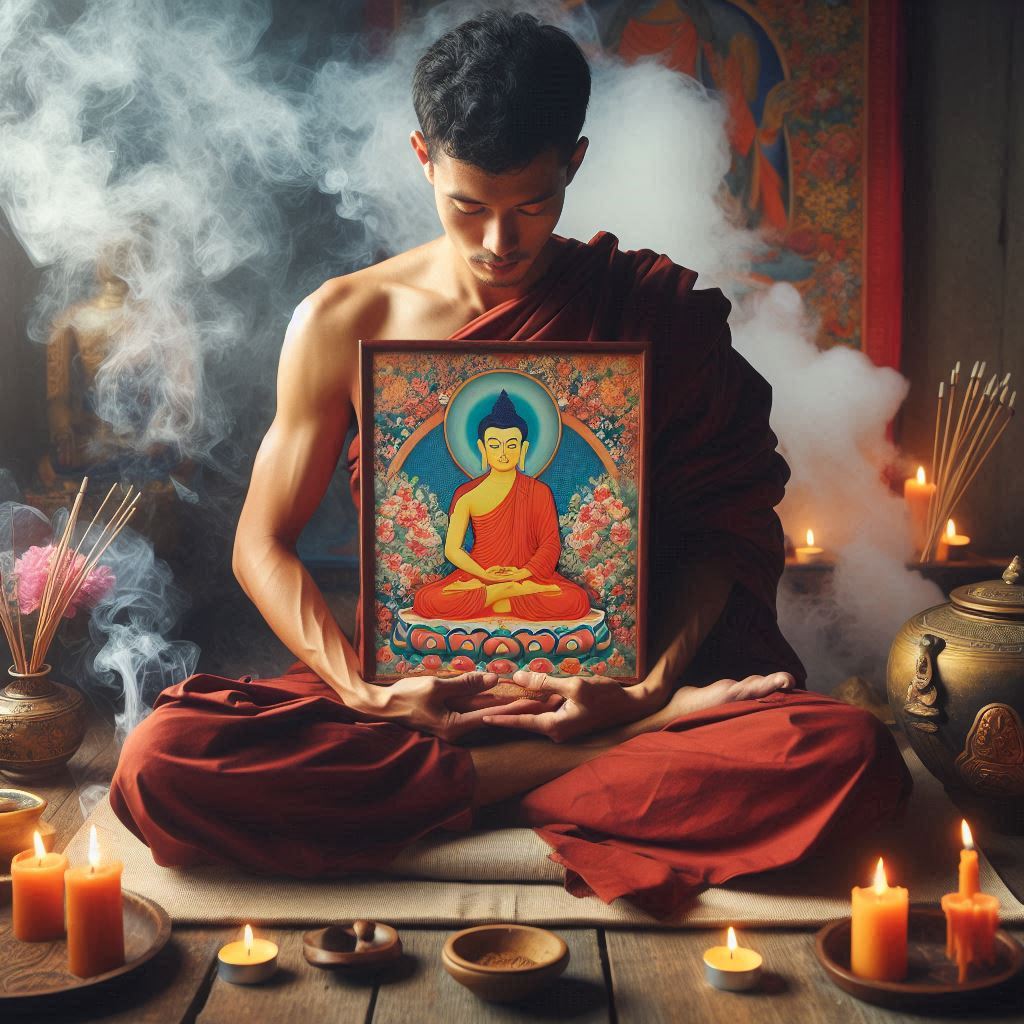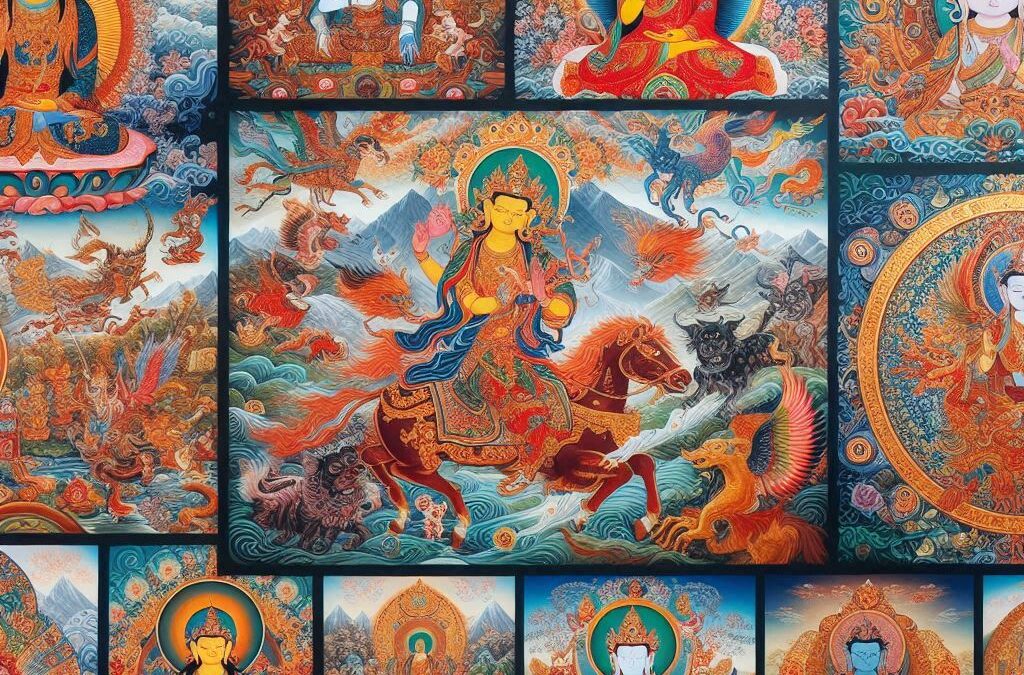Thanka painting is also one of the greatest cultural assets of Nepal and is widely practiced by the people of this country. Thangka or Thanka is a painting with attractive colors, Gods and symbolism or some scenes from teaching of Lord Buddha. Not only are these paintings pieces of art, but they also symbolize religious significance. It has been used in meditations and religious ceremonies that enable the followers to concentrate on the religious activities.
What is a Thanka?
A Thanka is a religious painting on cotton or silk usually portray the Buddha, gods, or other religious figures in Buddhism. These paintings are filled with symbolism with every colour, figure or other element painted in accordance to the different aspects of spirituality. They are intended as focusing objects for meditation. Some of Thankas are used in sacred places like temple or homes and have an important role in religious activities.
History of Thanka in Nepal
The tradition of Thangka painting originated from the Himalayan region and it has a strong association with the Tibetan Buddhism. Thanka painting started thriving in Nepal particularly in the Kathmandu valley. This art form is said to have originated in Nepal probably as early as in the 7th century. It was the Newar artists of Kathmandu Valley that significantly contributed towards the growth of Thanka painting. They used their artistic abilities with the religious principles to make the Thankas.
The Process of Making a Thanka

Preparing or creating Thanka is not an easy task as it requires a lot of time and effort. Thanka is painted by artists known as Thangka or paubha painters in Nepal, who take years to study to master the art. A Thanka painter can take months or even years to complete one painting and of course the size and details of the painting has an effect on the amount of time spent on it. The artist starts by getting a surface on which they start painting.
Often canvas is made of either cotton or silk. The chalk and glue are placed onto the canvas and spread in thin layers making the ground for painting the canvas. The next procedure involves making a rough sketch of the painting to guide the artist in the real painting process. The figures and the background of each picture are calculated as strictly as possible following the standard procedure. If the sketching is over, the artist starts to paint.
Traditional thankas are Painted with natural colors derived from mineral, Vegetable sources and may contain stones as well. Gold leaf is also used particularly in specific scenarios. It is done layer by layer where the artist always has to ensure he has the time to let it dry before he can proceed. After the painting is complete it is blessed by a Lama know as a religious or spiritual person. This blessing is also crucial because it turns the painting into a religious art filled with divine energy.
Symbols in Thanka Art

According the Hindu mythology, the lotus represent purity and enlightenment. It symbolizes the process of overcoming the challenges one faces in life. Mandalas are religious paintings with circular shapes and are closely associated with Buddhism, where they symbolize the universe. They assist those who practice meditation in visualizing the path leading to enlightenment. Most Thankas portray Buddhist god or bodhisattva. These figures are of different aspects such as knowledge, love and power in that order. Thangka also symbolizes the cycle of birth, death and re-incarnation, considered to be an important concept in Buddhism.
Thanka in Buddhist Practice

Thankas have significance in the rituals of Buddhism. They are used in meditation and in rituals and the images are used by the practitioners to help them concentrate on the desirable spiritual ideals. In monasteries and temples, Thankas are used and placed during celebrations, ceremonies or festival events. Some Thangkas are also foldable in such a way that people can travel with them for protective or religious purposes.
Thanka in Modern Nepal
Today Thanka painting is still playing one of the significant roles in the life of Nepali people and their traditions. Even today, skilled artists, especially in the Kathmandu valley prepare these sacred paintings in the traditional manner. But there is a demand for Thangka which was traditionally used for religious practices and now people buy Thangkas as pieces of art for aesthetics to decorate their homes or give it to art lovers and tourists. This has resulted in the development of Thangka workshops and schools where young artists are trained to work on the arts. Today, many Nepalese artists considered thanka painting as a reliable source of income.
Conclusion
However, Thangka painting is not just an art form, it is an art of love and prayer that has been central to the tradition of the Nepalese people for generations. These complex art works serve as a reminder of Buddhist principles and a tool for internal reflection. In Nepal now, tradition of Thangka painting is still continuing by the new generation of artists who are trying to take forward the tradition of their forefathers and at the same time introducing the world with this divine art. This beautiful piece of art remains touching people’s hearts and being the symbol of spiritual traditions of Nepal.
Also Check,
https://www.healthyfoodshealthygoods.com/pure-triphala-churna/
https://www.healthyfoodshealthygoods.com/5-best-food-for-your-brain/

